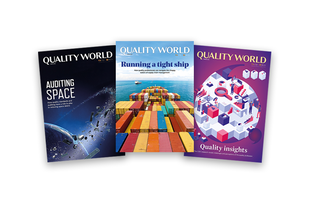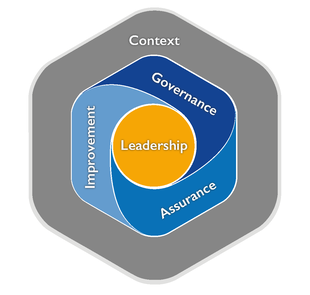
Leadership in quality: How to structure your approach
Progress indicator

William Whittaker, CQP MCQI, says the right leadership style can help quality professionals have a huge impact during uncertain times.
While it can be a daunting task, not to mention personally challenging, a quality professional must show leadership skills to add value to their organisation.
In a changing world made more volatile by Brexit, US President Donald Trump, snap general elections, potential market uncertainty and the ever-increasing influence of social media, it is a challenging time to be a business leader.
With all the external risks and influences, it would be easy to assume that engaging and asking business leaders to drive and deliver quality is very low on an organisation’s agenda, but this perception is misguided. Management systems now also have a greater emphasis on leadership in the Annex SL format.
So how does a business leader set a course to meet the ever-changing demands of the marketplace?
As quality professionals, we have a duty to engage, influence, help and support leaders in these difficult and uncertain times to drive and deliver quality initiatives within an organisation. If this is not undertaken, quality can be forgotten by business leaders while they consider other issues, which could result in quality being seen as a cost to the business.
However, a quality service or product can differentiate a brand or business in the marketplace, reduce cost through Lean processes or reduced resources, eliminate environmental, safety or cyber risks, and increase productivity by utilising new technology.
Leadership comes in many forms but providing direction, guidance, knowledge and authority is key. It is often forgotten that leadership exists at all levels within an organisation.
To deliver this leadership a quality professional must take a structured approach, using existing management systems to identify current and potential risks to the business. This should not be limited to the existing risks or processes, but also future risks and opportunities such as compliance, cyber security, resource and technological advances.
Leadership comes in many forms but providing direction, guidance, knowledge and authority is key.
If senior business leaders are presented with additional risks and opportunities, backed with data, corrective actions, projected implementation costs and long-term operational cost savings, they can make judgements to protect against these external factors.
These judgements should then be considered and reviewed regularly and not only as part of an annual review. They should be part of a live document, considered and owned by the quality professional in partnership with the senior management team.
Together they can engage everyone, embrace the changes and support those delivering it. They can drive forward the quality of the service or product to stay ahead of the competition at a time of uncertainty.
William Whittaker, CQP MCQI, is managing consultant at WA Management
Member only

This article is free to access for a limited time only. Only CQI and IRCA members receive access to all content.
The Profession Map

Your route to success - equipping modern quality leaders to meet evolving business demands.


